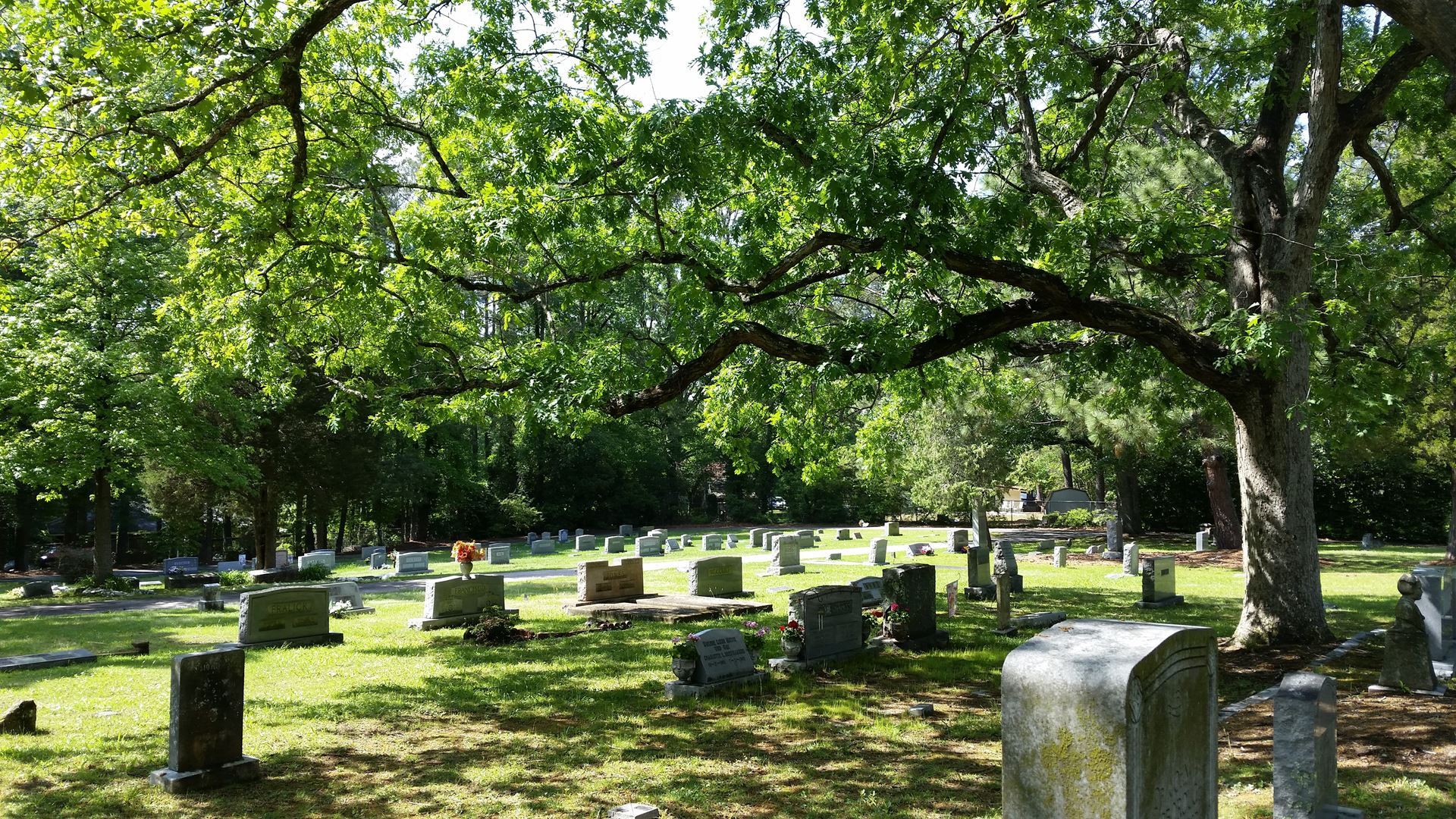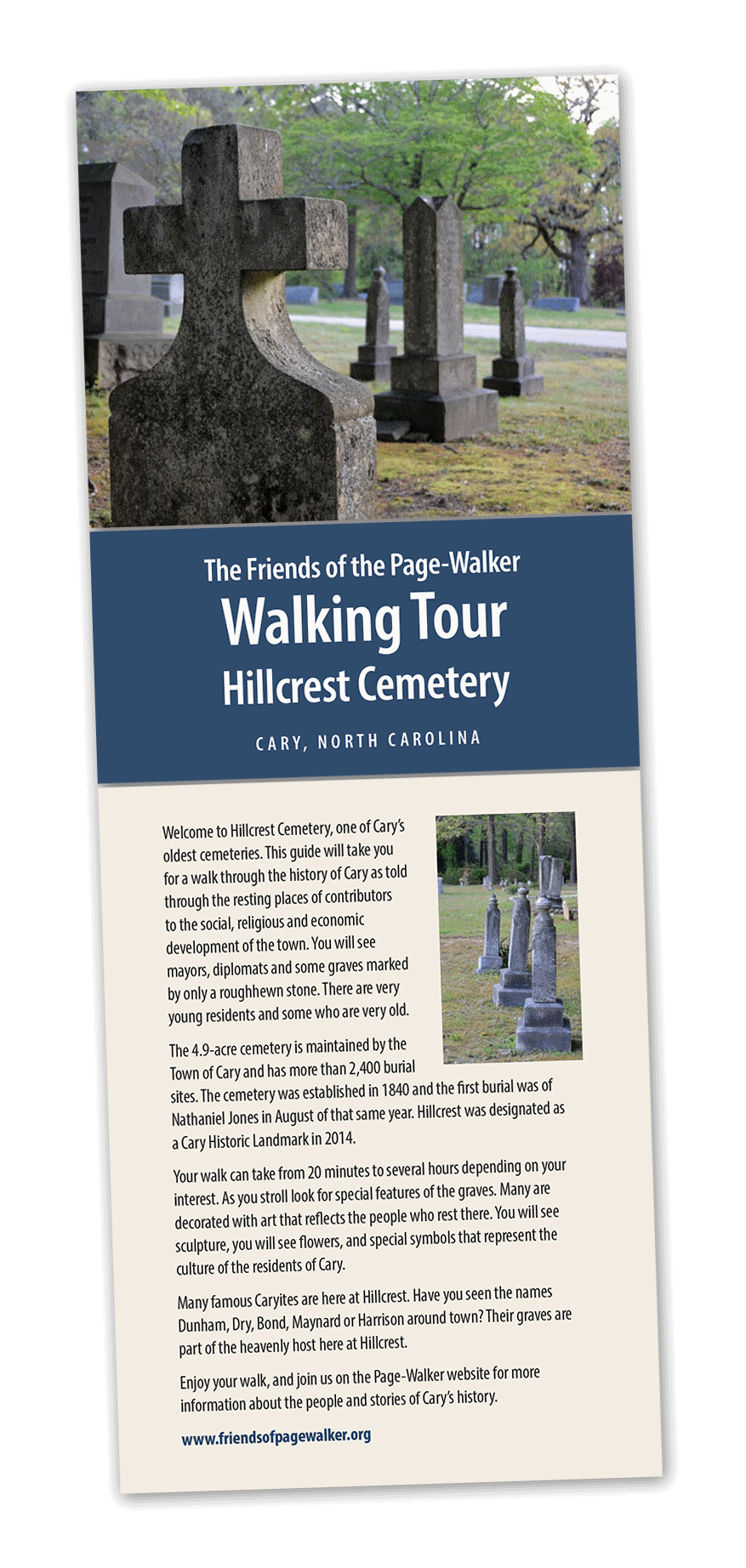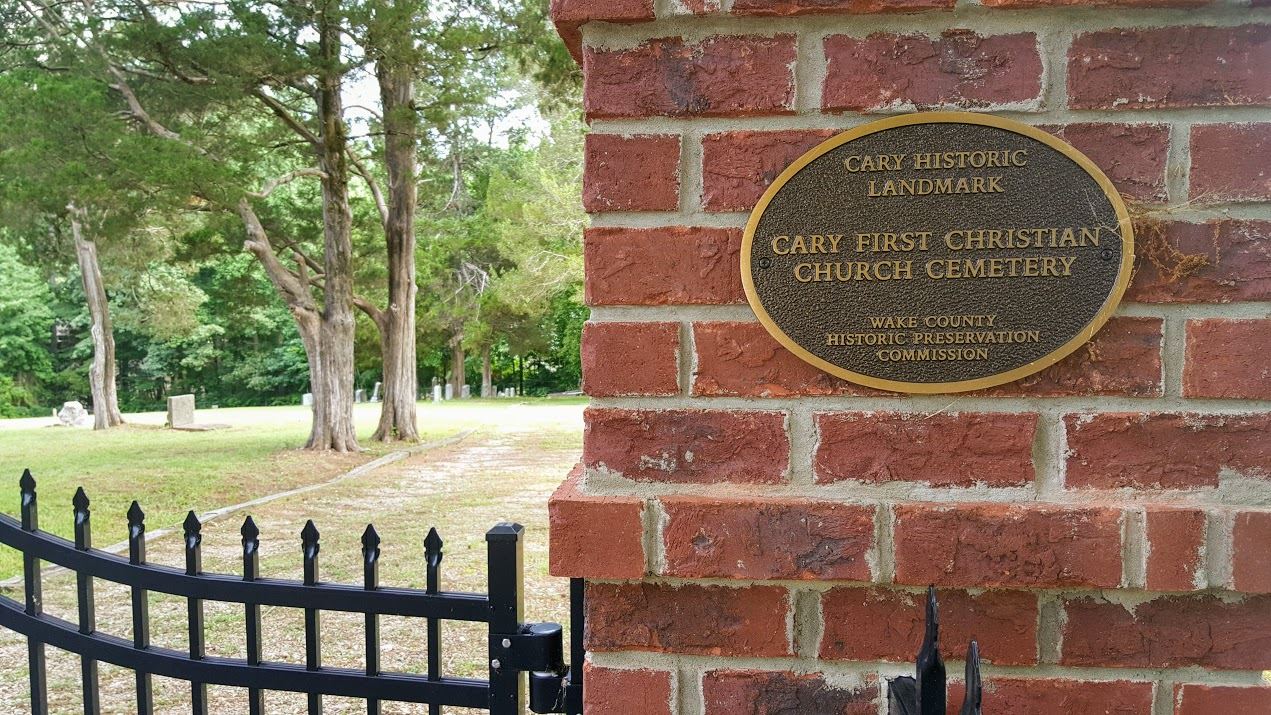Cary CemeteriesThere are more than 50 cemeteries in the Cary area, some are town-owned, some adjoin places of worship, and many are small family plots. Over the years, the Friends have chronicled many of these locations in a series of Preservation Speaker Series programs entitled "Mysteries and Secrets," presented each year in late October. You can find additional, detailed information on cemeteries in Wake County (including Cary) through the Wake County Genealogical Society website. Much of the data on this site was compiled by long-time Cary resident and founding member of the Friends of Page-Walker Irene Kittinger.
Hillcrest Cemetery
The Friends of the Page-Walker evoke memories of generations past with two educational pieces about Hillcrest Cemetery: a walking tour brochure and an online version of our program about Hillcrest Cemetery. Walking TourEver driven down Maynard Road or been to Bond Park or visited the Herb C. Young Community Center? You can learn about the people behind the names in a self-guided walking tour created by the Friends that includes 23 notable Cary-ites. Depending on your level of interest, your walk can take anywhere from 20 minutes to an hour or more. Click on the Walking Tour brochure image to the right to open a printable version of the brochure. Walking tour brochures are also available at the cemetery entrance as well as several downtown Town facilities, including the Cary Arts Center, Cary Theater and The Page-Walker Arts & History Center. The cemetery is opened daily from 8 am to 6 pm (winter months), and 8 am to 8 pm (summer months). The walking tour was developed in partnership with the Town of Cary, which owns and maintains the cemetery.Explore Further
You can find out even more about Hillcrest Cemetery by downloading our “Mysteries and Secrets: Exploring Hillcrest Cemetery” document. This fascinating narrative was taken from the 2009 "Mysteries and Secrets" Preservation Speaker Series program. White Plains Cemetery
The White Plains Cemetery is the final resting place of Nathaniel Jones and his family. Who was Nathaniel Jones? Besides being the owner of 10,000+ acres of land that comprise much of present-day eastern Cary, Jones (1749-1815) served as a Wake County Commissioner, Justice of the Peace, Sheriff, Clerk of Court, member of the General Assembly and delegate to the Constitutional Convention in Hillsborough in 1788. In 1792, he offered his land to the state for the future capital of North Carolina, but land owned by Joel Lane was eventually selected in nearby Raleigh. The cemetery, which likely dates to 1780, had fallen into disrepair by the 1970s. Through a 35-year collaborative effort between the Cary Historical Society (from which The Friends of the Page-Walker was formed) the Town of Cary, and Sunsouth Homes, the cemetery was restored and formerly welcomed as an historic site on October 22, 2011 at a Remembrance Day celebration attended by Town representatives, Friends of the Page-Walker, Cary Historical Society members, Maynard Oaks residents, Daughters of the American Revolution, and descendants of the Jones family. Reason the first, agreeable to the rights of man, every humane person, be his colour what it may, is entitled to Freedom, when he or she or they arrive at mature years. Reason the second, my conscience the grate Criterion condemns me for keeping them in slavery. Reason the third, the Golden Rule directs us to do unto every Humane Creature, as we would wish to be done unto, and shure I am, that there is not one of us would agree to be kept in slavery during a long life. Reason the fourth and last, I wish to die with a clear conscience that I may not be ashamed to appear before my master in the future world. First Christian Church Cemetery
|

 Hillcrest Cemetery is a Cary historic landmark and the final resting place of many familiar names throughout Cary.
Hillcrest Cemetery is a Cary historic landmark and the final resting place of many familiar names throughout Cary.
 nes named his plantation White Plains after its fields of white cotton. His family cemetery, located in the Maynard Oaks subdivision, contains not only his grave, but that of his second wife, Rachel Perry Jones, and at least 9 other descendants thought to be children. The Jones family home stood on Walnut Street until the 1950s.
nes named his plantation White Plains after its fields of white cotton. His family cemetery, located in the Maynard Oaks subdivision, contains not only his grave, but that of his second wife, Rachel Perry Jones, and at least 9 other descendants thought to be children. The Jones family home stood on Walnut Street until the 1950s.  The First Christian Church Cemetery has been designated as a Cary Historic Landmark because of its association with the establishment of Cary’s first African-American religious congregation, and because since its earliest beginnings to the present day, it has been the location where some of Cary’s most prominent citizens are buried. The cemetery is surrounded by residential neighborhoods on 1.39 acres located about 1.3 miles southwest of downtown Cary. The cemetery is situated on the site where Cary’s first African-American church held its initial meeting in 1868, and is the only remaining resource associated with the congregation at this location. The cemetery’s grave markers are laid out in linear rows with a north-south orientation; there are approximately 261 interments as of 2021; 101 of them marked and 160 of them unmarked or unreadable. Members of all denominations have been continuously buried here since the first known interment in 1891.
The First Christian Church Cemetery has been designated as a Cary Historic Landmark because of its association with the establishment of Cary’s first African-American religious congregation, and because since its earliest beginnings to the present day, it has been the location where some of Cary’s most prominent citizens are buried. The cemetery is surrounded by residential neighborhoods on 1.39 acres located about 1.3 miles southwest of downtown Cary. The cemetery is situated on the site where Cary’s first African-American church held its initial meeting in 1868, and is the only remaining resource associated with the congregation at this location. The cemetery’s grave markers are laid out in linear rows with a north-south orientation; there are approximately 261 interments as of 2021; 101 of them marked and 160 of them unmarked or unreadable. Members of all denominations have been continuously buried here since the first known interment in 1891.